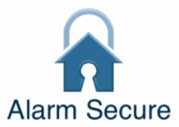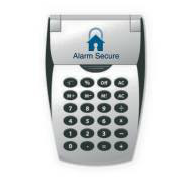Posted by Vincent Woodhall on November 13, 2014
SECURITY STATISTICS
Here are some home security statistics that may shock you… And hopefully motivate you to take action
- 2,000,000 home burglaries are reported each year in the United States.
- About 30 percent of all burglaries are through an open or unlocked window or door.
- Nearly 66 percent of all burglaries are residential (home) break-ins.
- Renters are just as likely to be the victims of property crime as homeowners.
- The highest percentage of burglaries occur during the summer months.
- Homes without security systems are up to 300% more likely to be broken into.
Background - Home Break-Ins
- According to the FBI, Home Break-In (Burglary) is the most common threat to our home.
- In the U.S. a home burglary occurs every 13 seconds.
- You are 3 times less likely to have a break in if You install a Police monitored security system.
- Every 13 seconds a home intrusion is committed.
- 2.5 million+ home intrusions are committed each year.
- Only 17% of the homes in U.S. have a security system.
- 2,500+ cars stolen per day… almost 2 cars a minute.
- Identity theft is the fastest growing crime in the U.S.
- 1 out of 3 residential assaults are a result of a burglary.
- 85% of break-ins are from non-professionals that are usually more desperate and dangerous.
- People want security and need peace of mind.
- Insurance agencies can offer discounts up to 20% for auto insurance when a home security system is installed.
- Home security statistics tell us that 95% of break-ins needed some amount of force to break-in.
- Thieves prefer easy access, through an unlocked doors or windows.
- Home security statistics tell us that the type of tools used to break in are usually simple; a screwdriver, pliers, pries bars, and small hammers are most common.
- Police usually only clear 13% of all reported burglaries due to lack of witnesses or physical evidence.
- 300% less likely to have a break in with a Police Monitored Alarm installed.
Perpetrators are usually male, under 25 years of age.
- They are looking for items that are small and expensive and easily converted to cash.
- Favorite items include: cash, jewelry, laptops, guns, digital cameras, small electronics (Ipods, GPS, PDA’s MP-3’s and CD’s)
- Money is usually used to support a drug habit.
- Usually occur in the daytime when occupants are at school or work.
- July and August most the frequent months for break-ins.
- February is the least frequent for home breaks.
- Simple selection process
- Choose an unoccupied home with easy access, the greatest amount of cover and the best escape routes.
- Homeowners often make this selection process easy for thieves by failing to take simple precautions.
- Harden the Target.
- Home security statistics tell us that burglars will usually bypass a house if it requires too much effort or more skills or tools than they possess.
- Most breaks are through front or back doors.
- Unlocked outer doors to common hallways give thieves a chance to break in through inner doors while remaining out of sight of neighbors and police. Keep outside doors locked
- Use a solid core or metal door at entrance points.
- Use a heavy-duty deadbolt with a one inch throw bolt.
- Use a quality knob-in-lock set with dead latch mechanism.
- Use a heavy duty strike plate with 3 inch screws into the frame.
- Use a wide angle peephole.
- When you move into a new house or apartment, change the door locks.
- Most common method of forced entry is simply to kick in the door.
- The weakest point is usually the lock strike plate.
- You should upgrade to a heavy-duty strike plate.
- This type of door is usually secured by latches only.
- They are vulnerable to attack.
- Security can be increased by inserting a wooden dowel or stick into the door track to prevent movement.
- There are also metal track blockers / locks available.
- Windows are left unlocked at a much higher rate than doors.
- An open window that is visible from the street may be the sole reason that a house is targeted. An open window with only a locked window screen is particularly inviting to thieves. Access is quick, easy and silent.
- Windows have latches, not locks; they should have secondary locking devices.
- Wooden sticks/dowels work well with horizontal sliding windows.
- For vertical windows, through the frame pins work well.
- For ventilation, leave no more than a 4 – 6 inch window opening.
- Make sure that opening is not large enough to allow someone to reach through to unlock the door or remove window lock.
- Get to know your neighbors.
- Agree to watch each other’s home.
- While on vacation, pick up mail, newspapers, packages and flyers; put out their trash on trash day (and return empty barrels).
- Offer to park your car in their driveway and listen for a siren from their home security system.
- Water flowers, grass and plants.
- Communicate with each other.
- Interior lighting is necessary to show signs of activity inside.
- Use timers (lights, radios and televisions). Make the home appears occupied.
- Exterior lighting is very important.
- Lights in front of the home should be on a timer.
- If you are not an owner of one of Safeguard Security's Reactor home security systems, use timers or motion sensors for other exterior lighting, especially at the rear of the house.
- Increase the potential of burglar being caught by 300%
- Burglars will usually bypass a home that they believe has a sophisticated burglar alarm. 3 times less likely.
- Home security statistics tell us that an audible horn or siren must be part of the system and linked to Police.
- Alarm systems should reset within three minutes so as not to disturb the neighborhood.
- Leave a key to your house and alarm system with a trusted neighbor who is usually there when you are not home.
- Alarm systems can also monitor fire sensors and panic buttons with the Fire Dept and Police.
- Engrave your driver’s license number (and state) on televisions, stereos, computers and small electronic appliances.
- Photograph your valuables, especially jewelry and electronics.
- Make a list of make, model, serial numbers and value of important items.
- Give a copy of this list to a relative or close friend.
- If you see anyone acting suspicious around your house or a neighbor’s house, call 911 immediately.
- If your house is broken into, call police immediately. Don’t touch anything that the criminal may have touched.
- Wait outside for police to arrive.
- Write down plate numbers of suspicious vehicles.
- Not all break-ins will be stopped, regardless of the precautions that you take. Talk to your insurance agent to make sure that your valuables will be covered in the event of a theft.




 RSS Feed
RSS Feed
